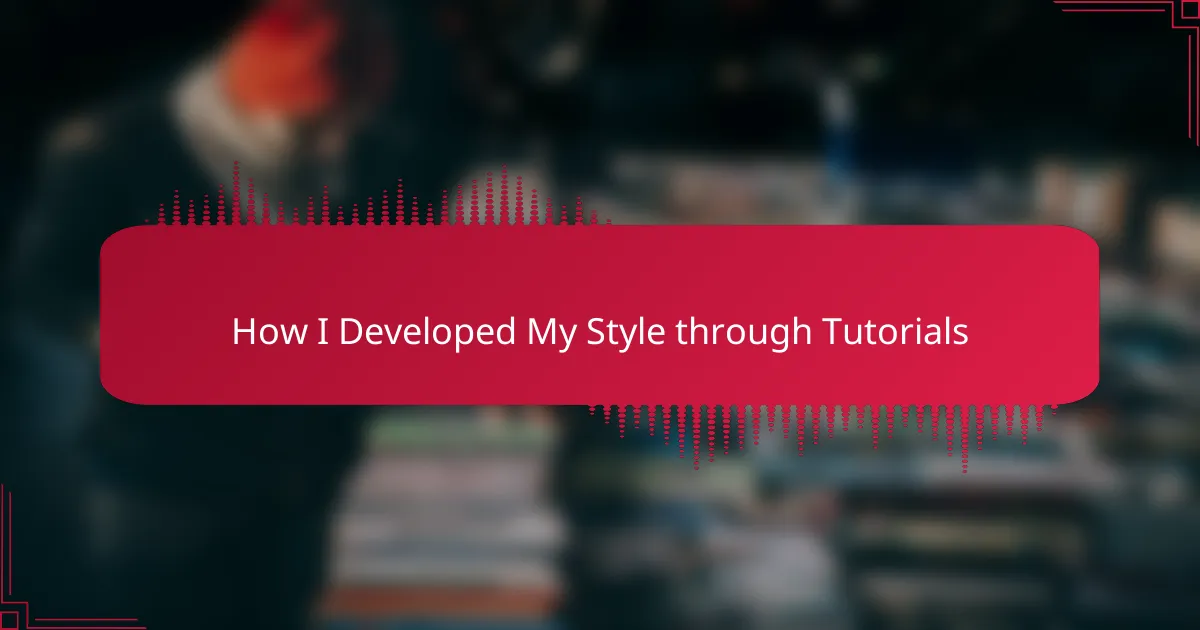Key takeaways
- Engaging with various tutorial resources, such as video tutorials and online courses, significantly enhances both technical skills and creative expression in comic book creation.
- Connecting with a community of fellow artists fosters a supportive environment that encourages experimentation and personal growth.
- Key skills learned from tutorials include character design, storyboarding, inking techniques, and color theory, which enrich storytelling and artistic techniques.
- Challenges like balancing theory and practice can be overcome by actively applying learned techniques and engaging with the artistic community for feedback and support.
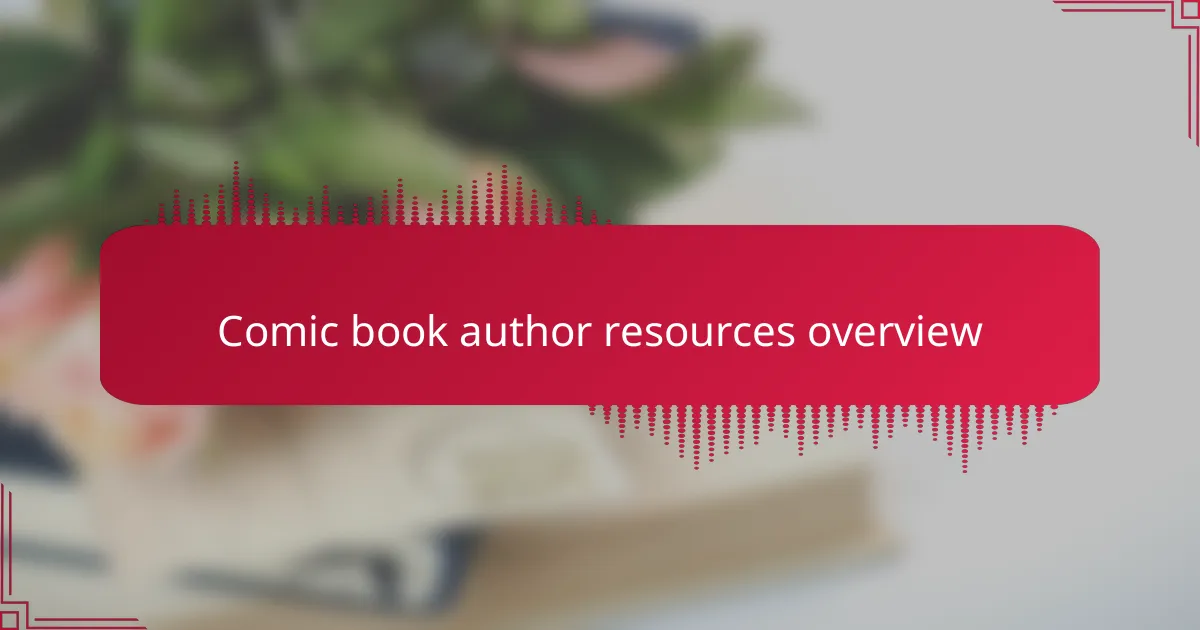
Comic book author resources overview
When I first dove into the world of comic book creation, I was overwhelmed by the sheer volume of resources available to aspiring authors. I remember spending hours watching tutorials on character development and plot structure. Each tutorial not only expanded my technical skills but also sparked my creative imagination, making me feel more connected to the craft.
Over time, I’ve come to appreciate various types of educational resources that have been game-changers for many writers, including myself. Here’s a helpful breakdown of what I found most beneficial:
- Video Tutorials: Platforms like YouTube feature countless creators who dissect storytelling techniques and art styles.
- Online Courses: Websites like Skillshare and Coursera offer structured lessons from industry professionals that go beyond the basics.
- Books and Ebooks: Resources such as “Understanding Comics” by Scott McCloud provide deep insights into the medium’s language and nuances.
- Forums and Communities: Engaging with fellow comic artists and writers on platforms like Reddit can provide real-time feedback and support.
- Workshops: Local libraries or art schools often host workshops where you can create alongside other aspiring authors and artists.
These resources not only honed my skills but also made me feel part of a larger community, which was incredibly nurturing in my journey as a comic book author.
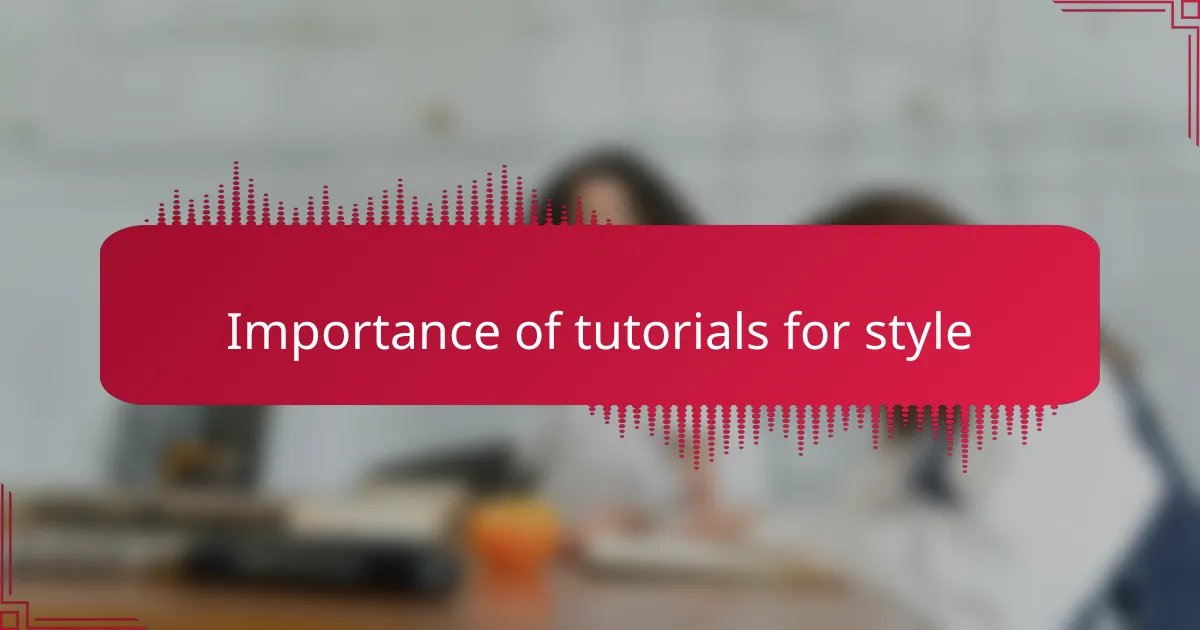
Importance of tutorials for style
When I think about the impact of tutorials on my artistic style, I can’t help but reminisce about the nights I spent glued to my screen, absorbing techniques from various instructors. Those moments were transformative; I learned not just how to draw but how to express emotions and narratives uniquely through my art. Have you ever felt that rush of inspiration when a particular style resonates with you? I certainly did, and it propelled me to experiment with new techniques that became integral to my own voice.
One thing I found particularly valuable was the variety in tutorials available. Some focused on the technical aspects, like shading and line work, while others opened my eyes to the conceptual side of storytelling through art. Trying out different styles and approaches helped me discover what truly resonated with me. I remember the first time I tried a technique I learned from a video; it felt like unlocking a hidden door to my creativity, showing me that there’s no one “right” way to create.
Engaging with tutorials wasn’t just about skills; it was also about connecting with a community of like-minded individuals. I began to comment on videos and share my progress, which led to insightful conversations that nurtured my growth. Have you ever felt that sense of camaraderie when others are on a similar learning journey? It’s that shared experience that often motivates us to keep refining our styles while encouraging one another through the process.
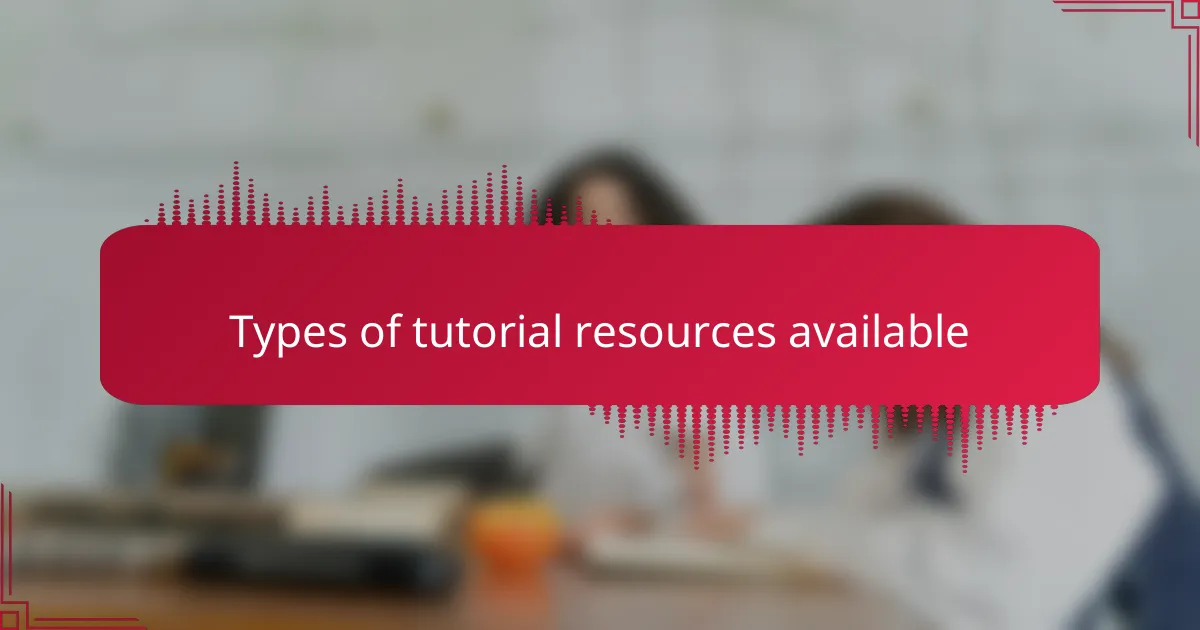
Types of tutorial resources available
As a comic book author, I’ve discovered that tutorials come in various forms, each offering unique insights and techniques. For instance, I remember diving into YouTube video tutorials that demonstrated character design, which not only helped improve my skills but also provided a sense of community as I engaged with fellow artists in the comments. The visual aspect really resonated with me, creating an immersive learning experience.
In addition to videos, reading articles and blog posts has been incredibly beneficial. I often find wisdom from seasoned comic creators who share their journeys, frustrations, and breakthroughs, making me feel less alone in my own struggles. Those written resources often break down complex techniques into manageable pieces, allowing me to reflect and practice at my own pace.
Here’s a quick list of the tutorial resources you might find useful:
- Video Tutorials: Engaging platforms like YouTube or Skillshare offering visual step-by-step processes.
- Online Courses: Structured learning experiences from sites like Coursera or Domestika that focus on specific skills.
- Blogs and Articles: Insightful writings from experienced comic creators sharing tips and personal stories.
- Podcasts: Conversations with authors that delve into techniques but also touch on the emotional journey of creating comics.
- Books: Comprehensive guides that cover everything from storytelling to illustration fundamentals.
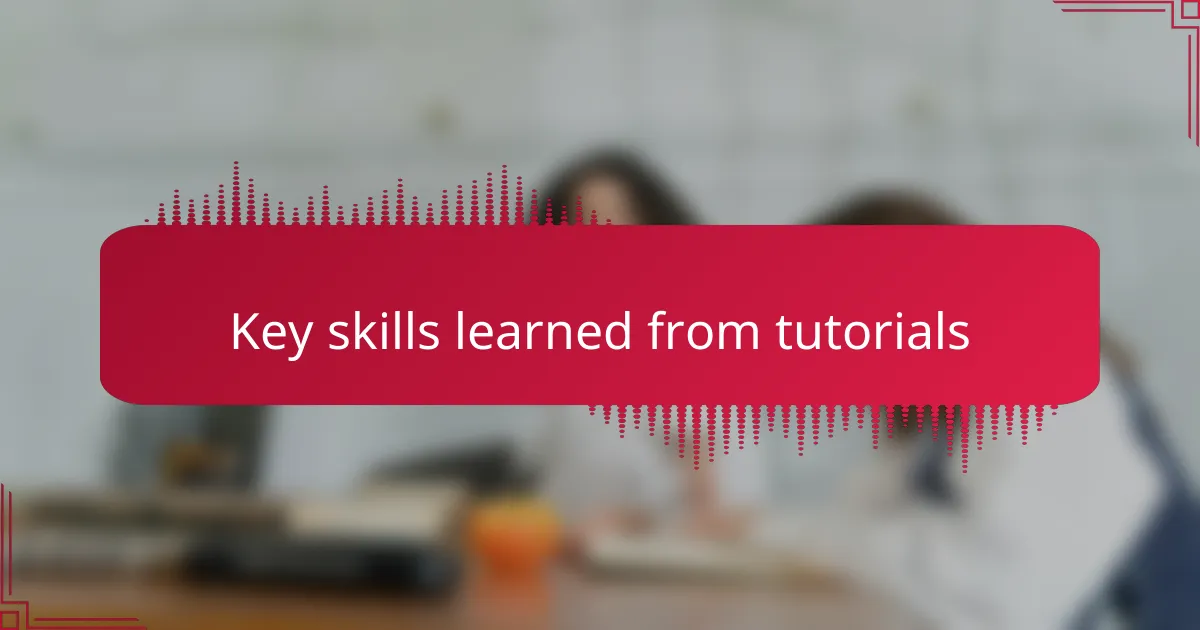
Key skills learned from tutorials
Using tutorials as a guide, I honed essential skills that transformed my approach to comic book creation. One pivotal moment for me was learning how to create dynamic character expressions. I recall painstakingly going through a tutorial that emphasized [censured] features, and suddenly, my characters felt more alive, conveying emotions like joy and despair authentically.
As I dove deeper into various tutorials, I realized there were several key skills that stood out, influencing my artistic journey:
- Character Design: Understanding proportions and creating unique designs.
- Storyboarding: Learning to visualize my narrative effectively.
- Inking Techniques: Gaining confidence in line work to enhance my drawings.
- Color Theory: Mastering the basics of color palettes to evoke the right mood.
- Digital Tools: Familiarizing myself with software that increased my efficiency.
These skills have not only enhanced my artistry but also enriched my storytelling, allowing me to connect with my audience on a deeper level.
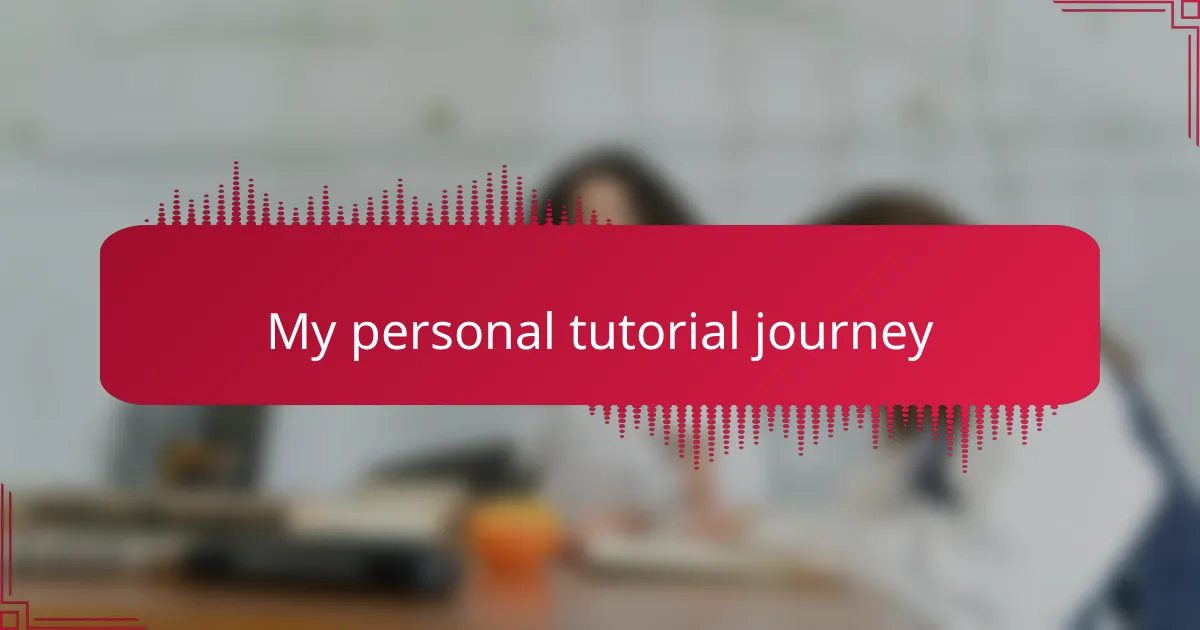
My personal tutorial journey
The journey through tutorials has been nothing short of exhilarating for me. Each lesson felt like a stepping stone, revealing new techniques that expanded my artistic horizons. I vividly recall the excitement of following a tutorial that taught me about color theory; watching my dull sketches burst into life was a moment of pure joy, making me realize the power of color in storytelling.
I also found myself revisiting tutorials multiple times, each time viewing them with fresh eyes. It’s amazing how my understanding evolved as I dug deeper into the material. Have you ever experienced that moment where you revisit something and suddenly everything clicks? I did when I finally grasped the subtleties of shading and how it could transform a flat image into a dynamic scene, adding depth that pulled readers in.
Engaging with these tutorial resources was more than just skill acquisition; it felt like embarking on a creative adventure. I remember discussing a character design tutorial in an online forum and receiving feedback that truly shaped my approach. It was uplifting to know I wasn’t alone on this journey and that every artist’s contribution could fuel collective growth. Isn’t it incredible how sharing our experiences can enhance our craft? That’s what keeps me motivated to keep learning and experimenting with my style.
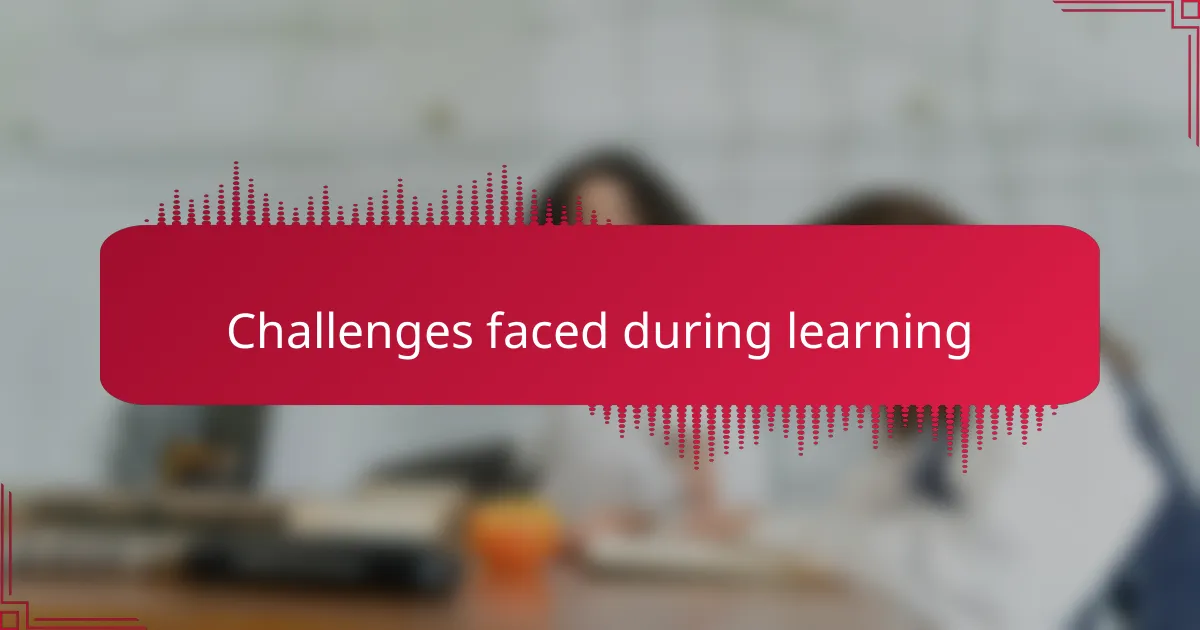
Challenges faced during learning
Learning through tutorials has its fair share of challenges that can often feel daunting. I remember the frustration of trying to absorb complex concepts in a video that I had to pause and rewind multiple times. Have you ever felt that sense of confusion wash over you when a technique just doesn’t click? It’s a common hurdle in creative learning, but overcoming it often leads to significant breakthroughs.
One persistent challenge I faced was finding the right balance between theory and practice. I would get so caught up in watching tutorials that I sometimes forgot to apply what I learned. I can still see myself staring at a blank page, feeling overwhelmed by the fear of making mistakes. That pressure can be paralyzing, especially when you’re eager to create. It makes me wonder: how do we push past that initial resistance to unleash our creativity?
There were moments when I felt isolated despite being surrounded by a wealth of online resources. Engaging with others was sometimes a challenge, too. I would often hesitate to share my work for fear of criticism, even though I craved feedback. Have you ever felt that hesitation? It’s in those moments that realizing the importance of community can be a game-changer. Each challenge in my learning journey ultimately shaped not just my style but my resilience as a comic book author.
